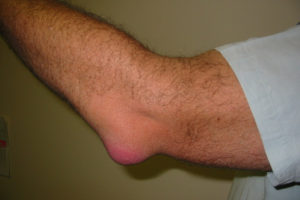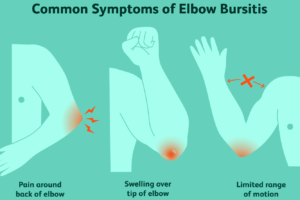 What is Golfer’s Elbow? It is a condition that creates pain where your tendons of your forearm muscles connect to the bony bump located on the inside of your elbow. If you are dealing with golfer’s elbow, you might experience pain in your wrist and forearm. Golfer’s elbow is comparable to tennis elbow. Tennis elbow happens on the outside of your elbow instead of the inside. Golfer’s elbow is not only experienced by golfers. In fact, tennis players and people who consistently use their wrists and/or clench their fingers may experience golfer’s elbow as well. Don’t let the pain from golfer’s elbow keep you from playing your favorite sport or limit your daily activities. With rest and an effective treatment plan, you can get right back into the swing of things– literally.
What is Golfer’s Elbow? It is a condition that creates pain where your tendons of your forearm muscles connect to the bony bump located on the inside of your elbow. If you are dealing with golfer’s elbow, you might experience pain in your wrist and forearm. Golfer’s elbow is comparable to tennis elbow. Tennis elbow happens on the outside of your elbow instead of the inside. Golfer’s elbow is not only experienced by golfers. In fact, tennis players and people who consistently use their wrists and/or clench their fingers may experience golfer’s elbow as well. Don’t let the pain from golfer’s elbow keep you from playing your favorite sport or limit your daily activities. With rest and an effective treatment plan, you can get right back into the swing of things– literally.
Signs & Symptoms of Golfer’s Elbow
- Pain & Soreness: Typically experienced on the inner side of your elbow, the pain can spread along the inside of your forearm. Certain movements may cause the pain to worsen.
- Stiffness: Your elbow might feel stiff and hard to move comfortably. Pain might intensify if you make a fist.
- Loss of Strength & Weakness: Your hands and wrist may begin to feel weak.
- Tingling Sensation & Numbness: Such sensations may radiate beyond your elbow down into your hands and fingers, specifically your ring finger.
Symptoms of golfer’s elbow can progress slowly over the course of time or hit suddenly. Specific movements can intensify the pain, including swinging an iron rod.
Golfer’s Elbow and Bursitis
Pain and swelling in a joint can be a sign of bursitis. The swelling may be significant, especially when tip of the elbow is affected.
When Should You Consult a Physician?
Before seeing a doctor, attempt rest, ice, and over-the-counter pain relievers to alleviate the pain and tenderness in your elbow. If this does not work, reach out to a doctor so you can be seen. You should seek immediate care if…
- You are unable to bend your elbow
- Your elbow is inflamed and to touch, and you have a fever;
- You believe you have a broken bone;
- Your elbow appears deformed.
What Causes Golfer’s Elbow?
Golfer’s elbow, or medial epicondylitis, occurs when the muscles and tendons that control the functions of your wrists and fingers are damaged. The damage is most often related to repeated or excessive stress, particularly forced wrist and finger movements. Improper techniques, lifting, hitting, or throwing and minimal warm-up or poor conditioning can also cause golfer’s elbow.
In addition to golf, there are many jobs and hobbies that may result in golfer’s elbow…
- Racket Sports – Not using the appropriate techniques when playing tennis, especially the backhand, may injure the tendons in your arm. Overusing topspin and using a racket that is too small or heavy may lead to an injury.
- Throwing Sports – Improper pitching techniques in softball or baseball can lead to golfer’s elbow/ Archery, football, and javelin throwing can also be a culprit.
- Weight Training – Failing to use the right techniques when lifting weights, including curling your wrists during biceps exercises can be too much on the muscles and tendons in your elbows.
- Other Forceful, Repetitive Movements – Working jobs that require you to do the same movements day in and day out can lead to golfer’s elbow. People working in construction, carpentry, plumbing, manufacturing plants, and other similar fields experience symptoms of medial epicondylitis.
Activities leading to golfer’s elbow typically need to be done for longer than one hour a day for several days.
Who is at Risk For Golfer’s Elbow?
There are certain conditions that could make you more prone to developing golfer’s elbow, these include…
- Age: 40+
- Completing the same activity daily for two or more hours
- Obesity
- Smokers
How To Prevent Golfer’s Elbow
The following steps can help you prevent golfer’s elbow…
- Strengthen The Muscles In Your Forearms – Using light weights or squeeze a stress ball. These simple exercises will help your muscles absorb the energy that comes from physical stress.
Do stretches prior to activities — Take a quick walk or jog to warm up your muscles and then do subtle stretches before you complete your activity. - Work On Your Form – No matter the sport, be willing to consult with a coach or instructor to assess your form to prevent overloading certain muscles.
- Use The Appropriate Equipment – If your golf clubs are old, consider investing in new, lightweight, graphite clubs. If tennis is your sport, be sure that your racket is the right size. Rackets with small grip or a heavy head can increase the likelihood of elbow problems.
- Lifting Correctly – When you lift absolutely anything, it is important that you keep your wrist rigid and stable to minimize the force on your elbow.
Allow yourself some rest — Avoid overusing your elbow. If you notice elbow pain, take a break and rest it.
For persistent pain that is interfering with your daily activities, see a rheumatologist to make the correct diagnosis and begin the proper treatment.
We Treat Patients With Golfers Elbow (Medial Epicondylitis)
Treating Golfer’s elbow effectively requires a multi-faceted approach that begins with rest and activity modification to reduce strain on the affected tendons. Ice therapy applied for 15-20 minutes several times daily can help reduce inflammation, while over-the-counter anti-inflammatory medications like ibuprofen may provide temporary pain relief. Physical therapy focusing on specific stretching and strengthening exercises for the forearm muscles is crucial for long-term recovery, with techniques like eccentric strengthening showing particular promise. For persistent cases, a healthcare provider might recommend more advanced interventions such as corticosteroid injections, platelet-rich plasma therapy, or in rare cases, surgical options. Most importantly, patience is key—recovery typically takes weeks to months, and gradually returning to activities while implementing proper technique and equipment modifications can help prevent recurrence.
> Learn More
Contact Us (859-331-3100) For More Information to Request an Appointment
—
 About Tristate Arthritis and Rheumatology
About Tristate Arthritis and Rheumatology
Tristate Arthritis and Rheumatology is first and largest Rheumatology practice in the Northern Kentucky area. Founded by Dr. Arthur Kunath in 1986, our rheumatology practice now consists of six doctors who are board certified in both Internal Medicine and Rheumatology and a Physician Assistant. Patients see one doctor (except in emergencies), thereby assuring continuity of care and an individualized doctor-patient atmosphere giving the physician the ability to establish personalized and detailed relationships. Our doctors have received numerous awards, including being listed as “Top Doctors” in Cincinnati Magazine, receiving the Patient’s Choice Award, the Most Compassionate Doctor Award, and the American College of Rheumatology’s “My Doc Rocks” award.
>> Learn More




